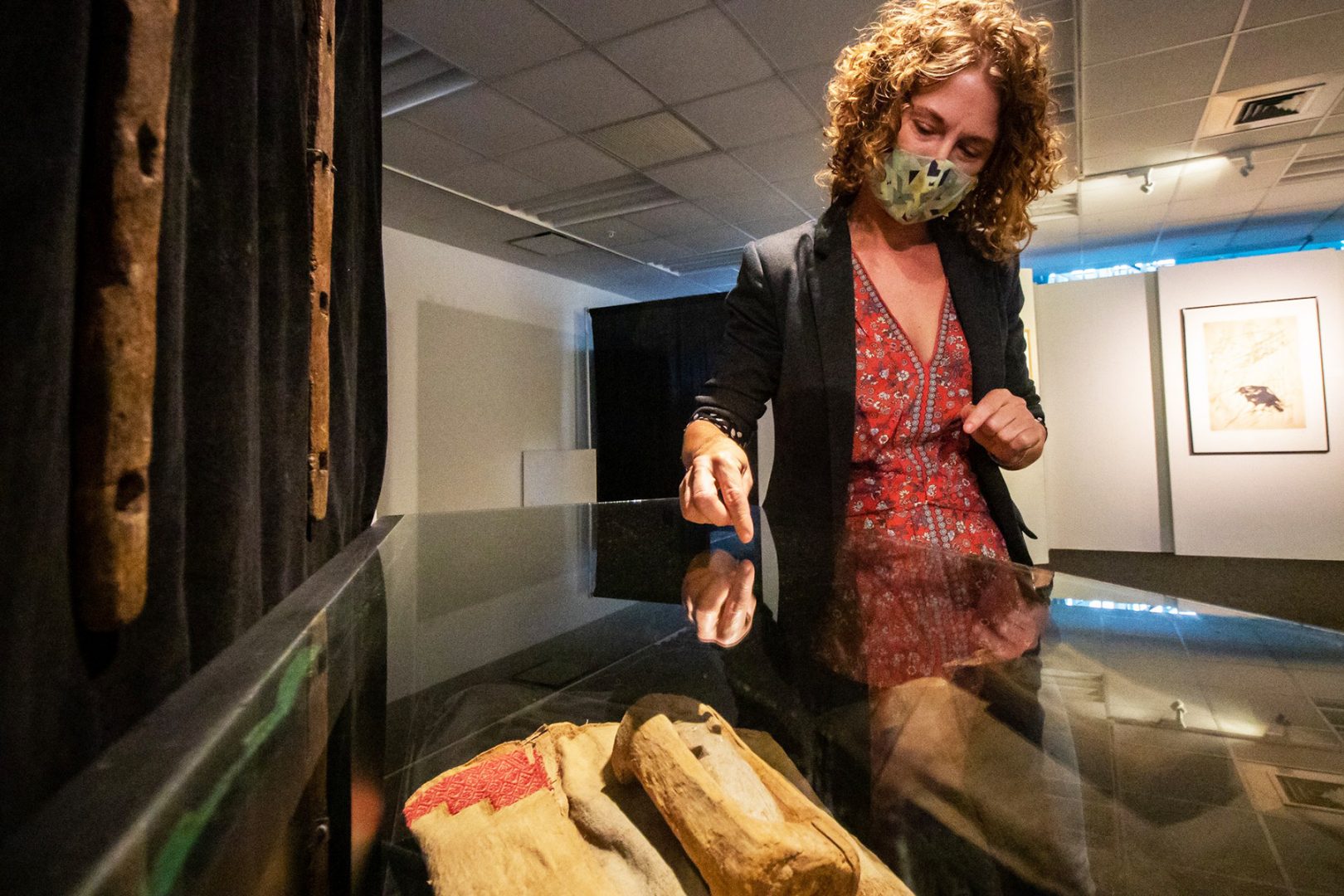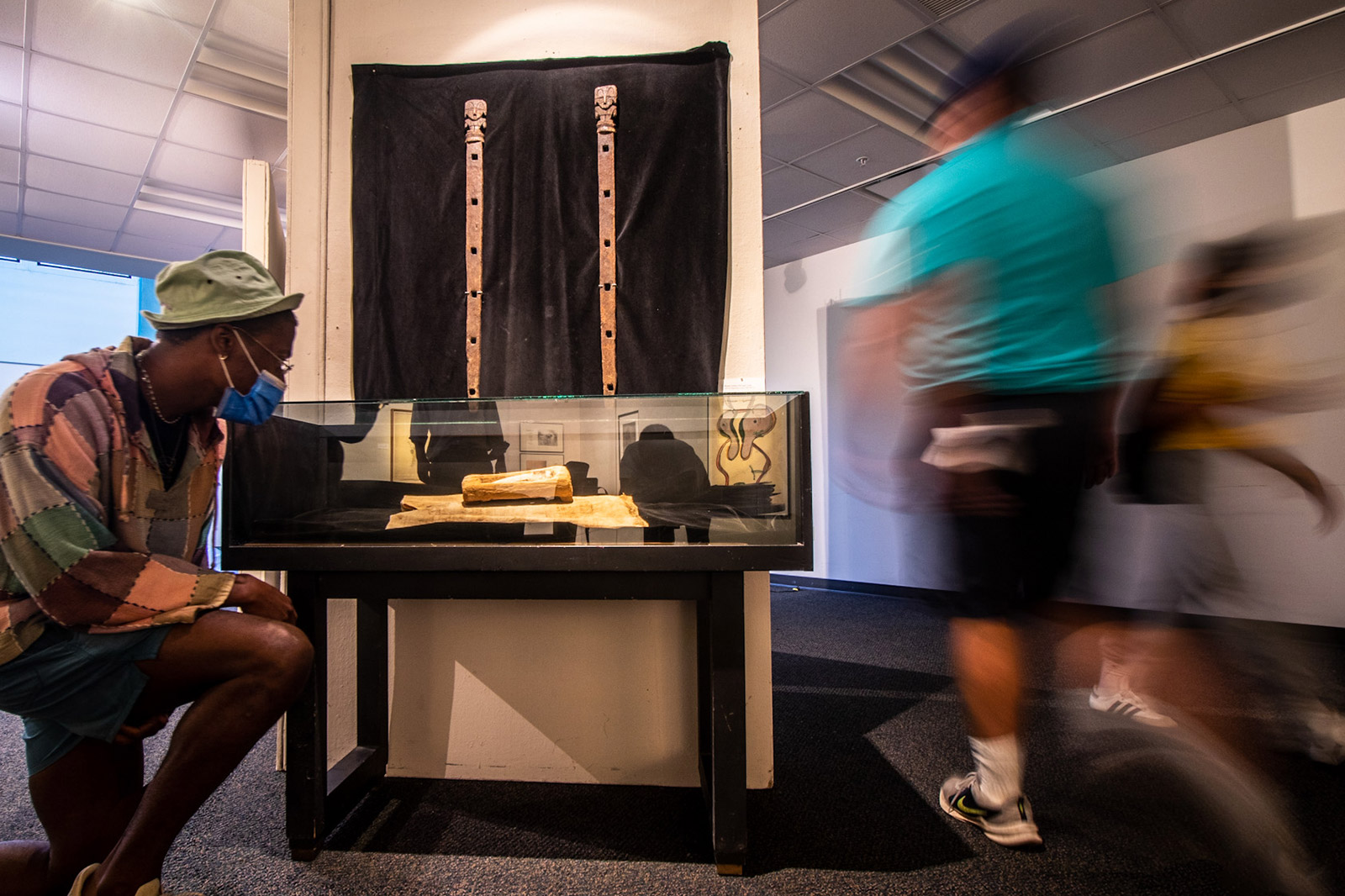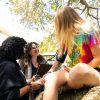It’s smaller than a loaf of bread, and it was carved out of wood found in northern Peru at about the same time that Attila the Hun was invading Italy. Or about 1,500 years ago.
A miniature cradle, and a doll that nestles perfectly inside.
Those artifacts, along with two wooden staffs from about the same period, have found their way to Eckerd College, thanks to a donation from a private collection facilitated by the Museum of Fine Arts (MFA), St. Petersburg.
The cradle, doll and staffs were owned by California architect and designer Alex Stark, who offered them to the museum. The pieces are part of a collection of more than 50 pre-Columbian artifacts from the Moche culture, which Stark’s late father had collected.
Michael Bennett, senior curator of early Western art at the MFA, contacted Tom Schneider, Eckerd’s associate vice president for development, on behalf of Mr. Stark with the gift offer. “We jumped at the opportunity,” Schneider says.
“The Museum of Fine Arts is proud to have been able to help facilitate the donation of the Peruvian doll and cradle, as well as two other Peruvian works, to Eckerd College,” says Darcy Schuller, director of marketing and communications for the MFA. “The private owner very much wanted these family heirlooms to be used for teaching purposes.”
The cradle, doll and staffs are now on display at Eckerd’s Cobb Gallery. And they’re already drawing attention.
Anna Guengerich, an assistant professor of anthropology at Eckerd, says she plans to use the pieces as a tool to help her students learn about ancient cultures. “They’re a powerful teaching aid,” she says. “I’m going to take the students to the gallery and let them touch the pieces … with gloves on. It’ll help bring home what they’re learning in class.”
Determining the exact age and what the doll and cradle represent is tricky, Guengerich says. It may not simply be a child’s toy. “My educated guess,” she adds, “is that the doll is a figure of an ancestor. And the fact that it’s not decorated suggests it may have been wrapped in some fabric.”
“It’s an unexpected gift and a hands-on connection to a distant moment in time,” she adds. “As an archeologist, one of the coolest parts of the job is to dig up something that someone last touched a thousand years ago.”












